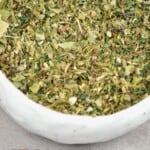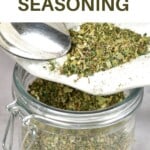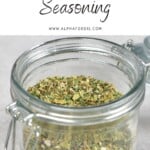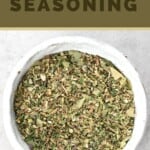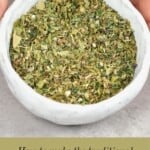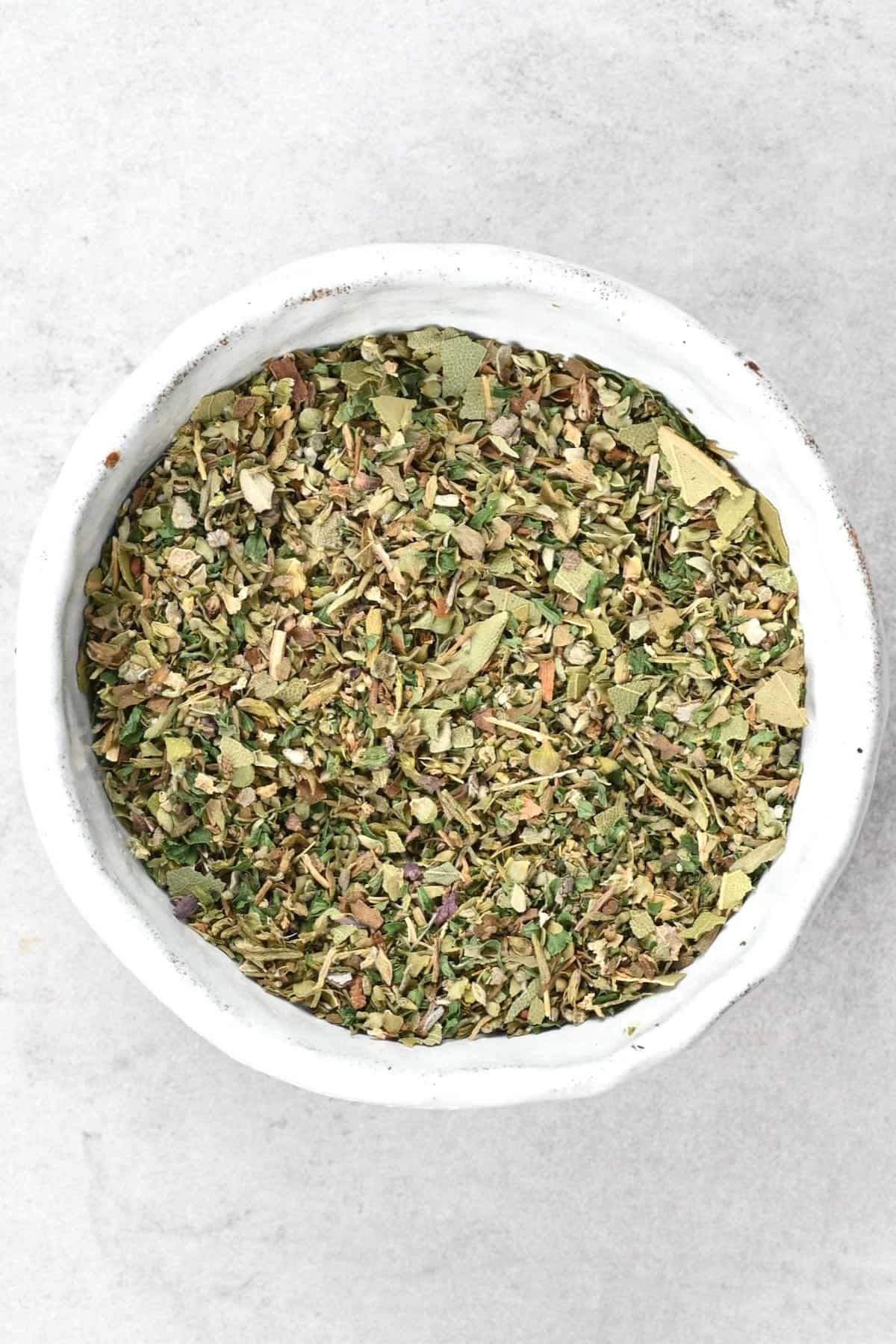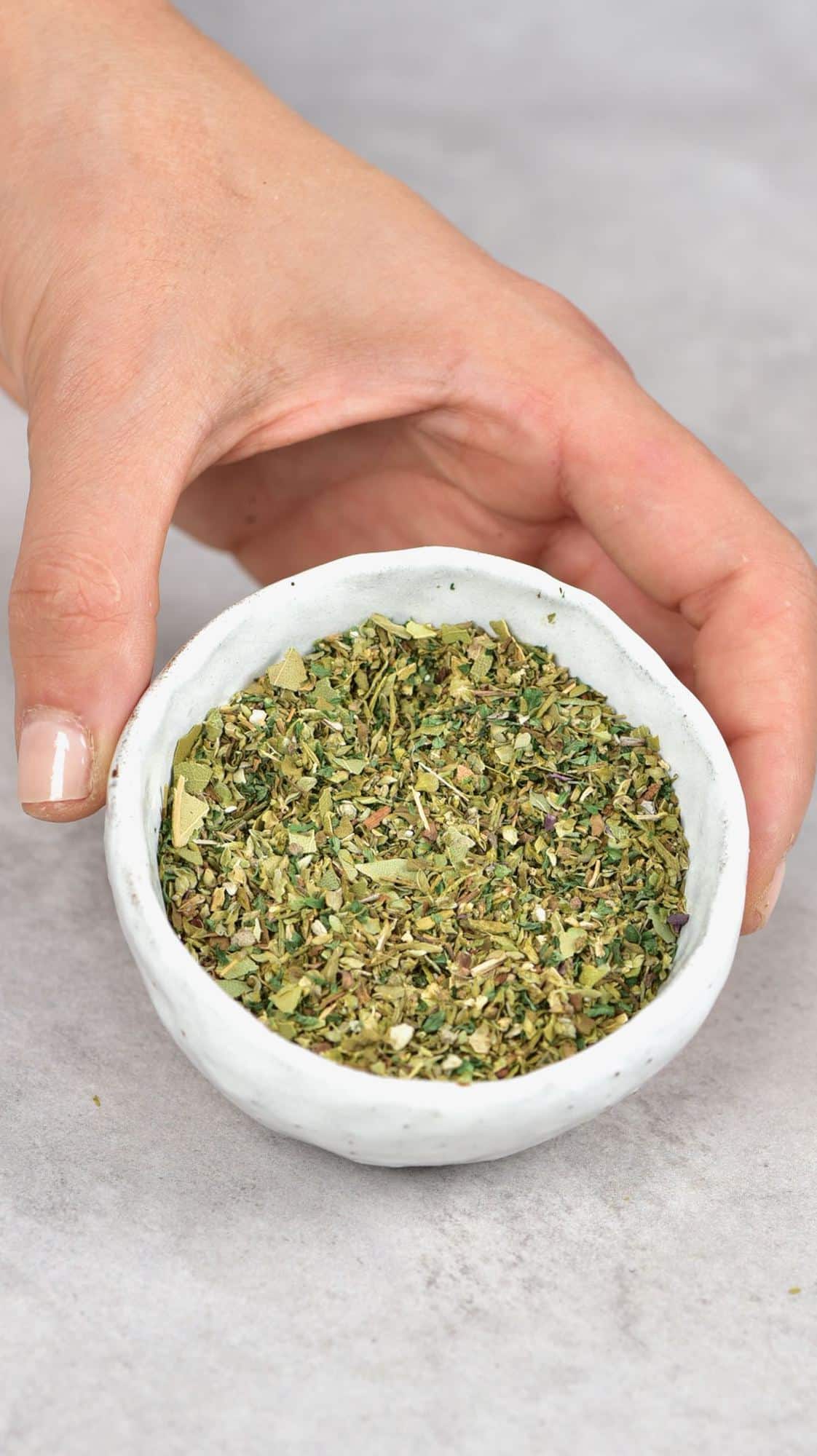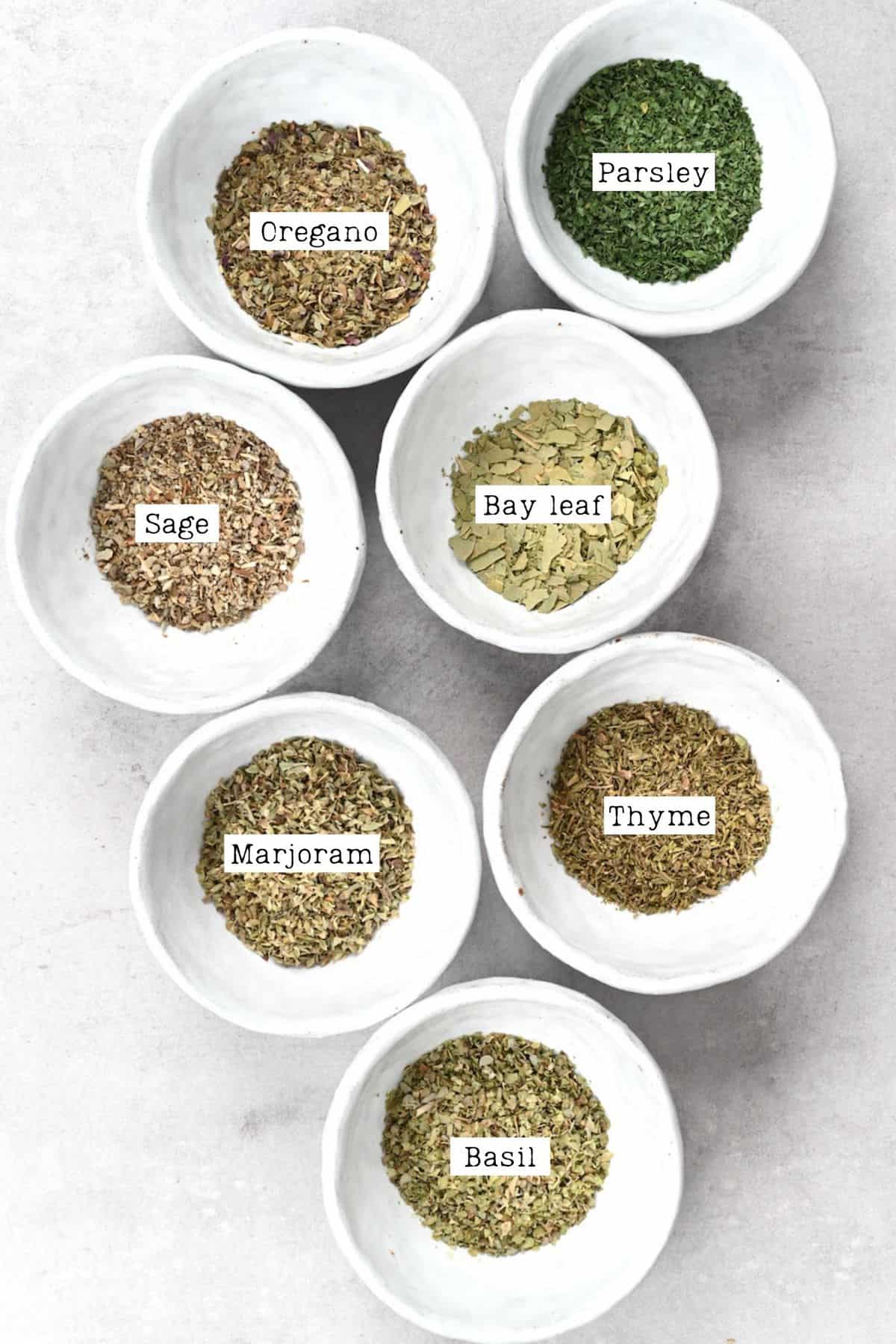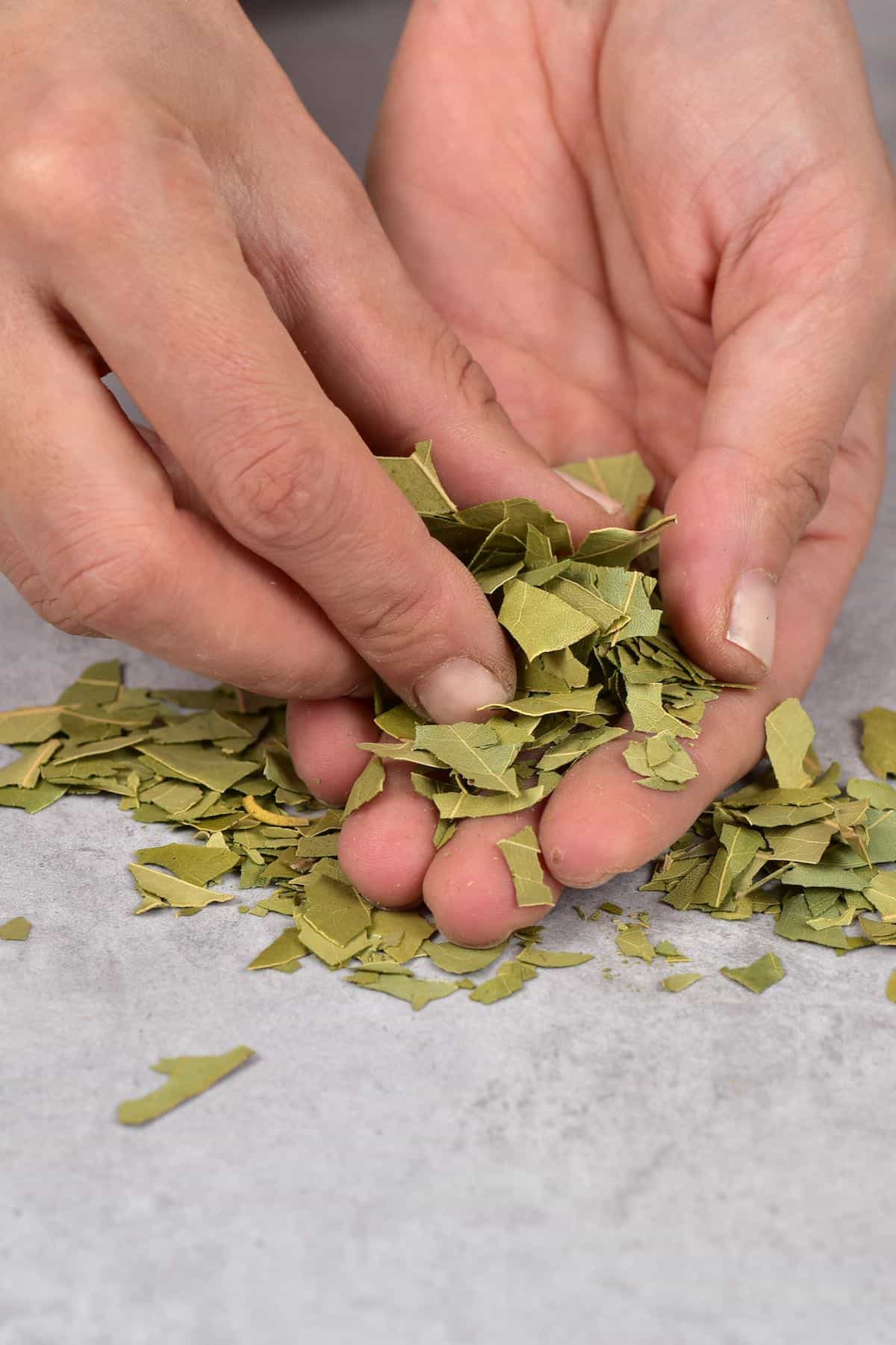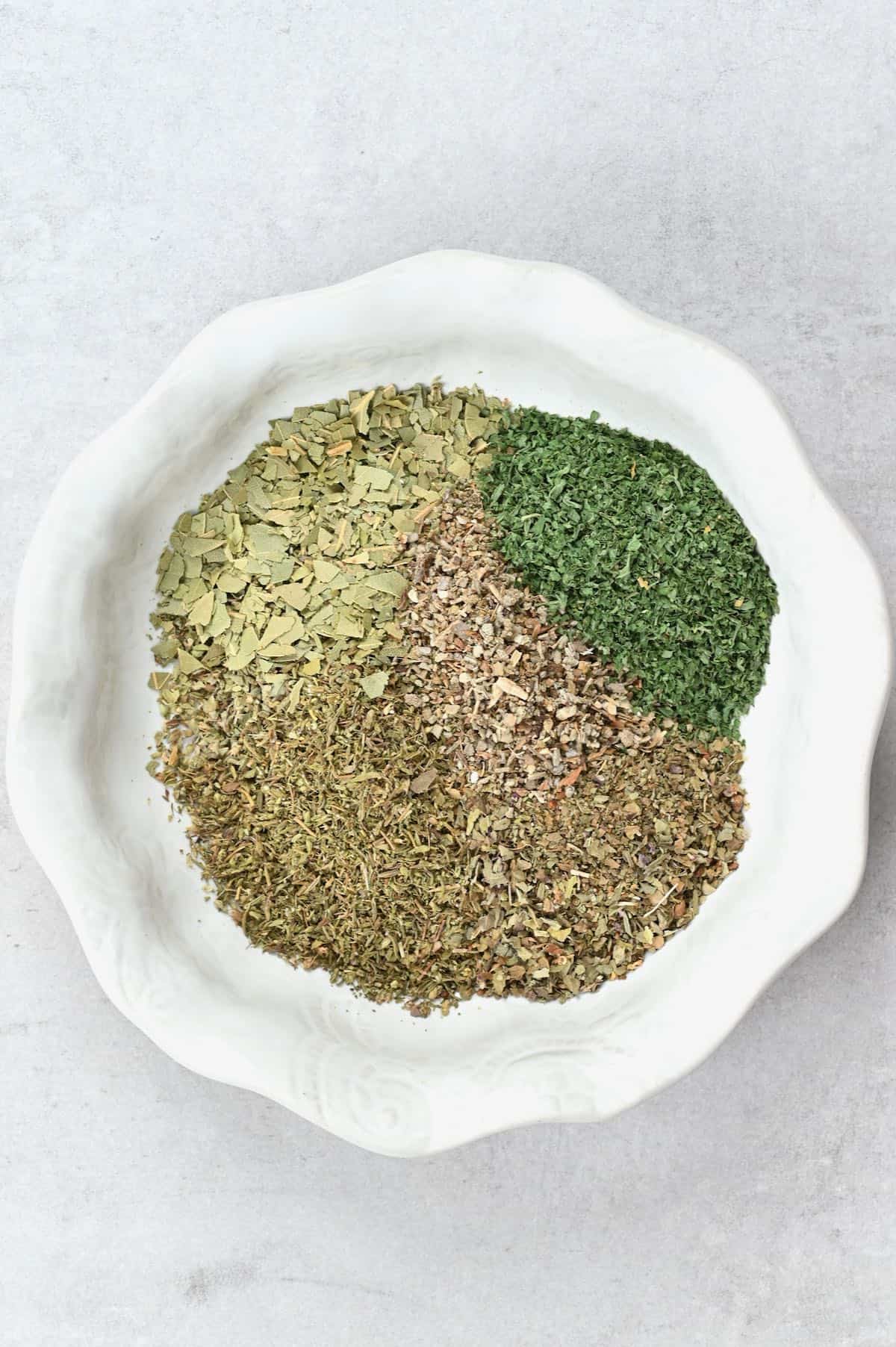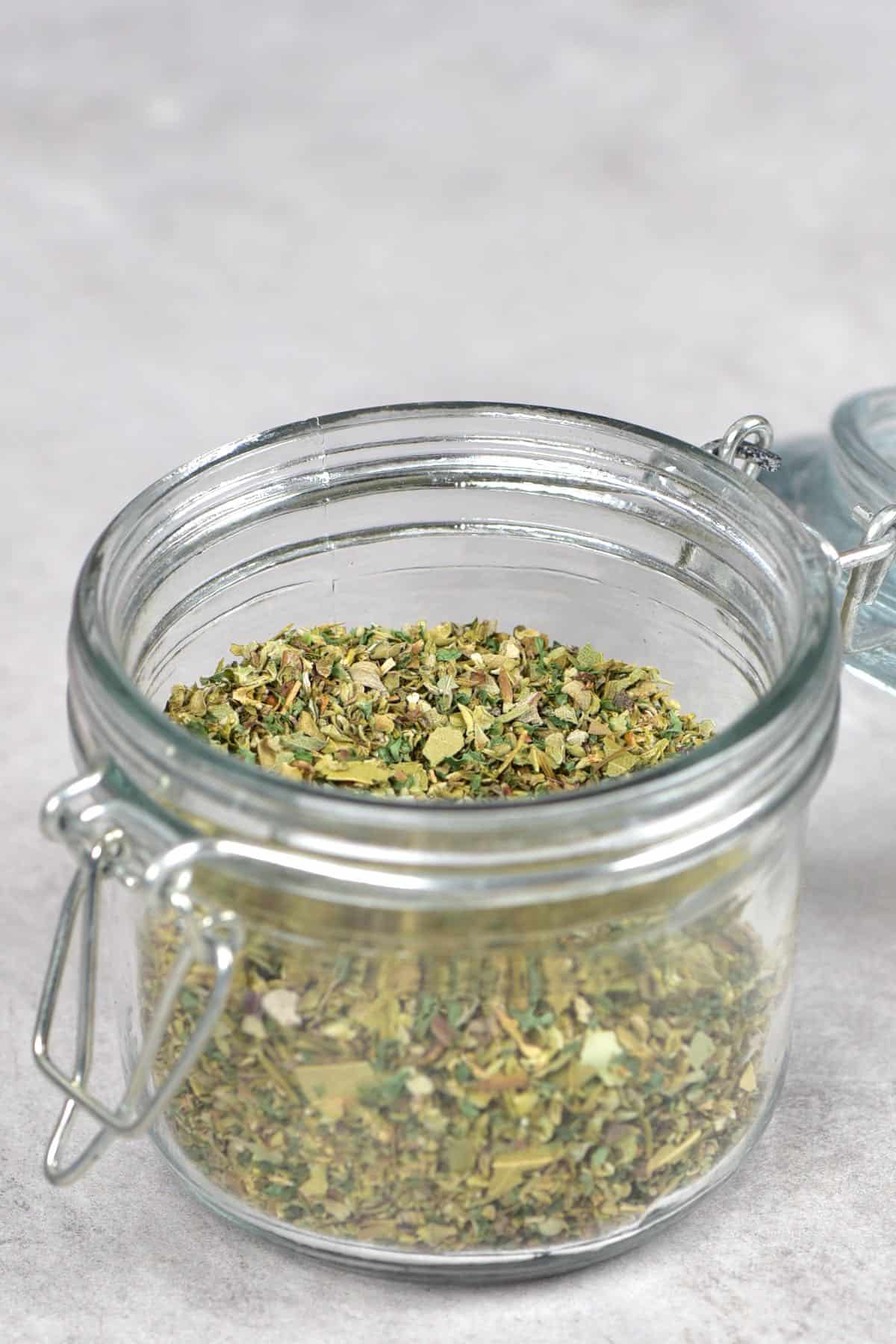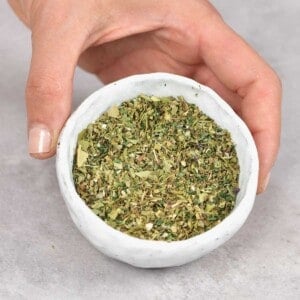Use it within marinades, dressings, pasta dishes, grilled veggies, sprinkled over pizza, in soups, burgers, meatballs, mixed into bread dough, or even over rice, etc. I’ve recently used it for these delicious pumpkin burgers. Having a single jar of this seasoning means not having to reach for seven separate jars every time you want to make a dish with a mixture of Italian spices. Plus, with Italian seasoning being so versatile, it’s so worth spending just a few minutes to pull together a large batch of this Italian seasoning mix once or twice a year (or more often, if you’re obsessed with the blend!). Spice blends are also great for anyone who has a herb garden too – not only is it incredibly cost-efficient, but the mix will be super-fresh and perfect for making for yourself as well as mixing and giving as gifts.
What is in this Italian seasoning?
Italian seasoning mix commonly includes several herbs such as basil, oregano, coriander, rosemary, thyme, and/or sage. The interesting thing is – most Italian blends are slightly different, so every recipe is slightly different. Within this blend, I’ve included: oregano, basil, thyme, sage, marjoram, parsley, and bay leaf. Optional Add-ins:
Garlic powder Onion powder Red pepper flakes Rosemary Cilantro Black pepper Paprika/smoked paprika
I tend to leave many of the “extras” like garlic, onion, and chili flakes aside and just add them into individual recipes. This is because those ingredients can overwhelm/ruin certain recipes – by omitting them from the main blend, you end up with a mix that is far more versatile. Likewise, while used in many Italian blends, I’ve found that cilantro doesn’t really make sense to me personally. However, if it’s something you’re used to using for Italian dishes, then – go for it. After all, the beauty of homemade Italian seasoning is in its versatility. Side note: funnily enough, I’ve heard that this blend isn’t actually popular/typically sold in Italy. I don’t actually know its origin or why it’s specifically called Italian Seasoning.
How to use it
There are tons of ways to use this versatile herb blend. Here are just a few examples: Use it within marinades, dressings, pasta dishes, grilled veggies, sprinkled over pizza, in soups, burgers, meatballs, mixed into bread dough, or even over rice, etc. I’ve recently used it for these delicious pumpkin burgers. The best thing is, if you use it during cooking or baking at all, the smell is amazing! It meanders its way through your house while you cook – enough to make everyone’s mouths water.
How to make Italian seasoning
First, if you’re using bay leaves, then begin by crushing them into smaller pieces. Either do this by hand, with a mortar and pestle, or blitz in a blender or a spice grinder for a couple of seconds. Then, mix all the herbs in a bowl (or directly in a jar) and give it a good mix/shake. Transfer to an airtight jar (if it’s not already in one) and store in a cool, dark place (like a cupboard). Make sure to keep away from direct heat and sunlight and any moisture.
How to store
One of the best things about spice blends is their long shelf life. This Italian seasoning is no different. Keep it stored in an airtight glass jar for up to 6 months. It will last longer, though the quality will deteriorate, and it depends on the freshness of the herbs that you begin with – so I aim to use it up within that time and then refresh it with new herbs. If you dry your herbs at home from fresh, then the blend can last even up to 2-3 years! You can also freeze this Italian spice mixture in a freezer-friendly glass jar for up to a year. This will help to keep it fresh for longer (as long as it’s 100% airtight so no moisture can enter the jar!).
Recipe notes
You can leave this Italian spice blend chunky or use a coffee/spice grinder (or even a blender) to blend into a finer powder. Feel free to omit the bay leaves, if wanted. You can also tweak the amounts of any if you prefer certain herbs to dominate more within the blend. If you want to use it as an Italian sausage seasoning – or burgers/meatballs (meat or meat-free), then you can leave the mixture slightly chunky or blend into a slightly finer product.
More homemade spice blends
Lebanese 7 Spice Blend (Sabaa Baharat) Simple Mexican Seasoning (Mexican Spice Blend) How To Make Shawarma Seasoning How To Make Everything Bagel Seasoning Easy Falafel Spice Mix (Middle-Eastern Spice Blend) Pumpkin Pie Spice (Substitutions and Uses) How To Make Herb Salt (Rosemary Salt Blend) Garam Masala Spice Traditional Lebanese Zaatar Blend (za’atar)
If you try this Italian Seasoning recipe, let me know your thoughts in the comments. I’d also really appreciate a recipe rating. And, feel free to tag me in your recreations @AlphaFoodie.

